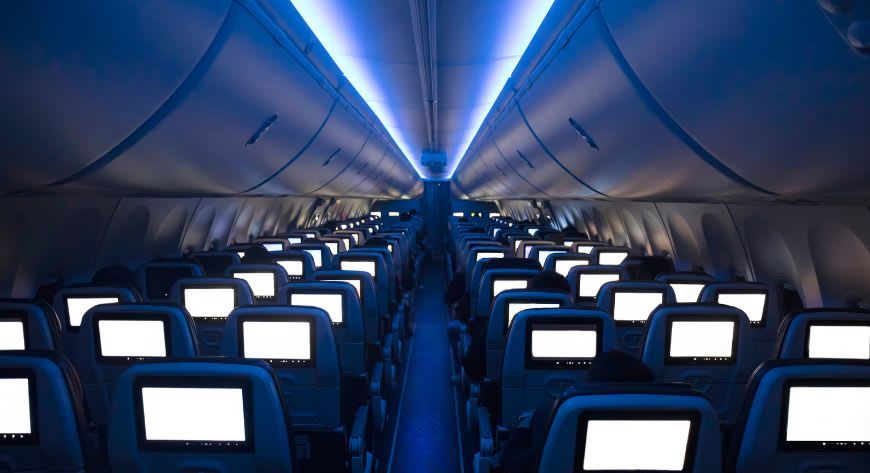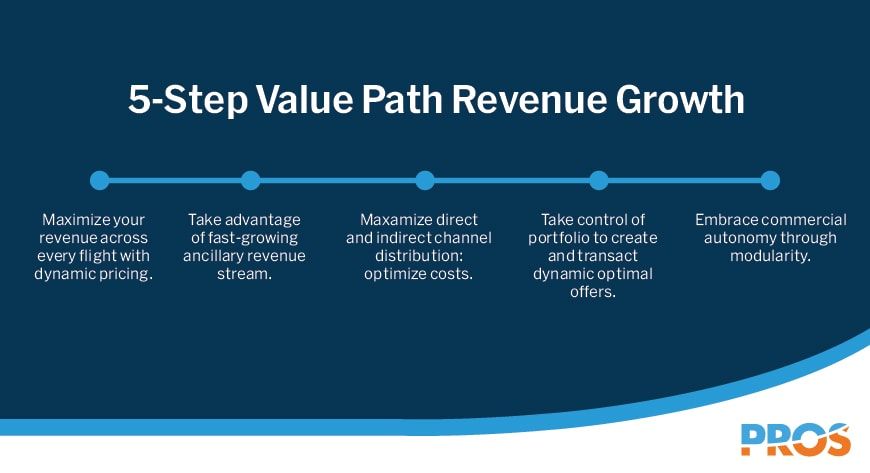Today’s airline industry is changing rapidly, and passengers have higher expectations than ever. However, many airlines find it challenging to keep up with these changes because their technology is outdated. To stay competitive, airlines need to modernize not just their systems, but also their overall approach to customer service and sales.
In this webinar, created in partnership with the World Aviation Festival, PROS experts explore the critical role of AI in transforming airline retailing, focusing on strategies to increase revenue, improve customer experiences, and create more value for both airlines and their passengers.
The discussion offers insights and practical advice on how airlines can navigate the complex IT ecosystem and own the next generation of offer management to drive meaningful revenue growth today.

Offer & Order Transformation
When it comes to Offer & Order Transformation in the travel industry, the question is no longer about “if” it should happen. It is about “when” and “how” to carry out this transformation. From a recent whitepaper by Travel in Motion and PROS, we can see that the airline industry is moving beyond just ideas and is now working on concrete plans for this transformation.
Any airline not on the journey to Offer & Order is at risk of losing out on the value of this transformation. There are three main perspectives on the topic to consider.
From the Business Perspective:
- Missed revenue upside – Adopting Offers & Orders can help airlines operate more efficiently and lead to improved revenue management strategies and cost savings.
- Business case around costs – A number of studies show how moving to an Offer & Order system, based on modern technology, can lead to significant savings that can be used to cover the cost of migrating to the Offer & Order model.
- Impact on customer experience – There is a need to shift to a more customer-centric approach, to be able to meet traveler expectations, and this means leaving legacy systems in the past.
From the Technological Perspective, missing out on the Offer & Order Transformation can lead to inability to prepare commercial systems and tech stack for the digital reality. To meet customer needs, offers need to become more dynamic and today’s legacy systems were not built to support this. An outdated tech stack can directly impact an airline’s competitiveness, revenue generation and customer satisfaction capabilities.
From the Customer Perspective, an airline’s inability to adapt to the changing needs of today’s travelers can lead to loss of opportunities and revenue.
Offer & Order Transformation: Where to Start
The transformation from outdated legacy systems to the modern and dynamic Offers & Orders setup is not an easy one. Very few airlines can afford to do it all at once. The transition process can take up to 5-10 years, so a safer and less risky approach is to do it step by step, not all at once.
Airlines can start with some initial learning phases – like proof of concepts. These early steps help educate and align different business units within the airline, and that is crucial for getting everyone on the same page. There is also the classic try, fail, learn, iterate approach that can bring benefits as well.
There is real value to be gained at every stage of this transformation – even before reaching the full Offer and Order world away from the legacy PSS.
Another benefit of this approach is that it reduces risk. Instead of committing all resources upfront to one big plan, airlines can adjust and adapt as they go. As innovations come up, the transition path can be adjusted to take advantage of them and to stay on top of the latest industry trends.
Airlines also need to focus on the value creation – generating revenue to fund future innovations and increased customer satisfaction that drives loyalty.
Full Offers & Orders and no legacy PSS are a long way from today but there are already numerous opportunities for airlines to improve their services through various retail initiatives, like dynamic pricing, ancillaries, and so much more.
There are many paths airlines can take to start realizing these benefits today, depending on their individual business priorities and strategies.
PROS 5-Step Value Path to Revenue Growth
Based on conversations and collaboration with customers, PROS has put together five key steps of how airlines can take a path to revenue growth and value generation.

Maximize revenue across every flight with dynamic pricing
The main question here is “How can we improve on the pricing side of the right-to-fly?” And the answer is: by moving away from traditional filed fare classes and towards dynamic pricing. By implementing continuous and request-specific pricing, airlines can gain up to 3-4% additional value.
Take advantage of fast-growing ancillary revenue streams
Airlines are moving away from just selling passengers the right-to-fly component and instead figuring out what the passenger needs and providing them with a tailored offer for optional services. airBaltic observed a 6% ASR revenue increase per passenger after adopting PROS Dynamic Ancillary Pricing solution.
Maximize direct and indirect channel distribution
Airlines can sell more tickets and save money by improving both direct sales (like booking through their own website) and indirect sales (like through travel agents). Effective digital offer marketing is one way to impact direct bookings and acquire more direct traffic to increase conversion from it. Another value stream for airlines is to liberate distribution and improve the cost of sale with an airline-led offer creation engine, thus reducing dependency on GDS.
Take control of portfolio to create and transact dynamic, optimal offers
Offers are only as good as the products they contain. To ensure they can create the best possible offers, airlines need a robust system that lets them manage their products and inventory effectively across all channels. That is where a solution like PROS Portfolio Management comes in. It includes three key components: a Product Catalogue, a Stock Keeper, and a Supplier Automation module with the latter being the enabler of scale for third-party relationships between airlines and their suppliers.
Embrace commercial autonomy through modularity
Modularity is key when it comes to making sure the airline tech stack stays flexible and future-proof. It prevents airlines from becoming dependent on any one monolithic system. An airline must be able to integrate diverse shopping flows and create a seamless digital experience for its customers. Modularity enables airlines to build a flexible, scalable technology stack that can keep pace with market changes and new demands.
Q&A
Check out the Q&A section at the end of the webinar which provides answers to questions like:
- What does Portfolio management replace from the current PSS capabilities?
- How can dynamic pricing work across non-airline channels like NDC connected agencies?
- How are you dealing to support YoY increment of shopping transactions on digital channels?
Conclusion
The ongoing transformation of airline retailing has led to a more personalized and seamless process of offering services, improving the overall customer experience. As the industry continues to evolve, the incorporation of AI in airline retailing will undoubtedly play a crucial role in shaping the future of air travel.
By focusing on the value path to offers and orders, airlines can create more value for their customers and themselves. This shift towards a more data-driven approach has the potential to revolutionize the industry and improve the overall travel experience.
Starting on the journey to offer and order transformation may seem daunting, but many airlines have already begun and proved that it is not impossible when done the right way and with the right partners.
Not sure where to start? We are here to help, reach out and begin your journey today!
